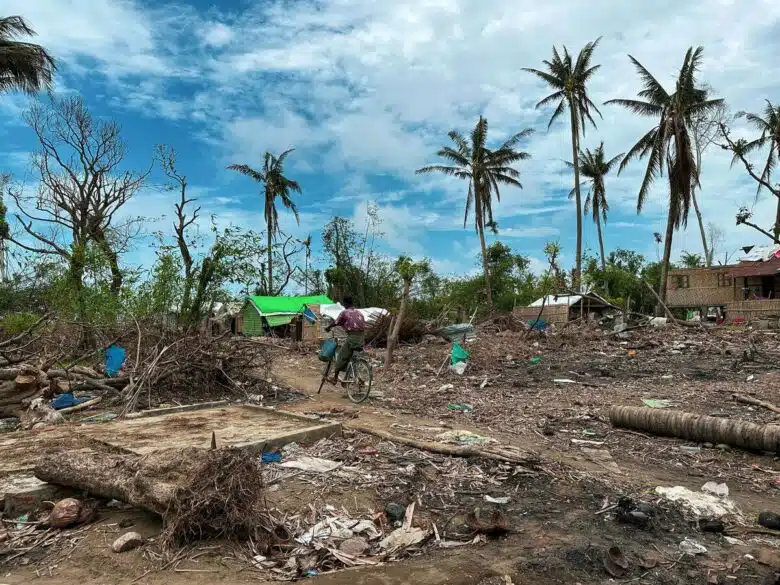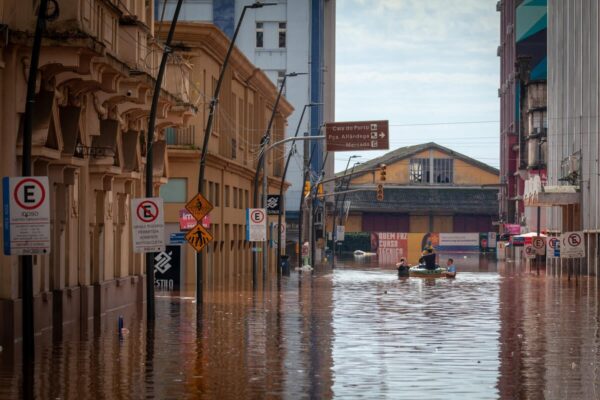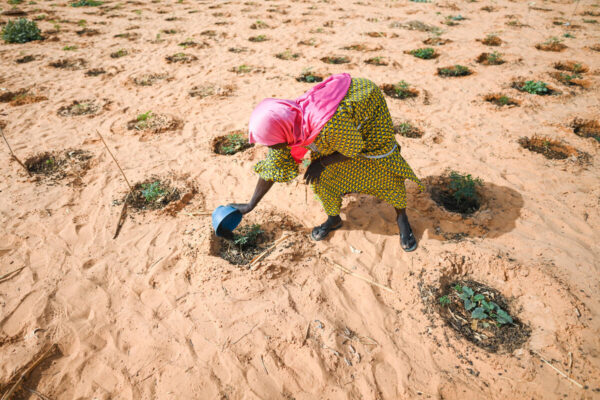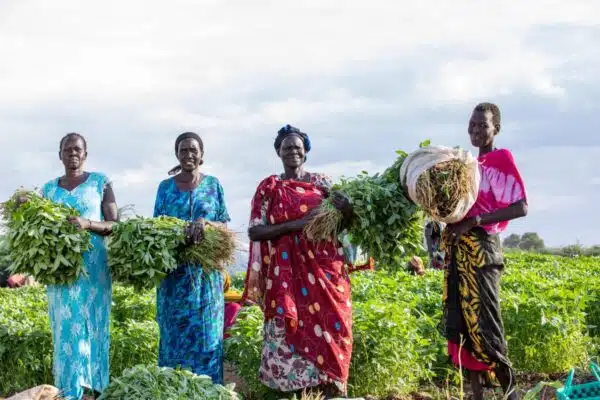
Somali refugee Abdi (centre) and his family were among 25,000 refugees displaced from their homes in Kenya’s Dadaab Refugee Complex by flooding in November 2023. © UNHCR/Mohamed Maalim
Torrential rains across the East and Horn of Africa have claimed hundreds of lives and washed away homes, uprooting thousands of people including refugees and other previously displaced people
By UNHCR staff
Severe flooding has hit countries in the East and Horn of Africa as heavy El Niño-rains continue to afflict a refugee-hosting region at the front line of the climate crisis, where deep droughts followed by intense rains have in recent years become the new normal.
When flooding occurs, it is often refugees and other displaced people who are among the hardest hit because they live precarious lives in temporary or semi-permanent shelters in sites erected in often remote locations.
Most recently in Kenya, Burundi and Somalia, houses, schools, and community buildings have been damaged or washed away, along with livestock and crops, leaving people facing an increasing risk of hunger and disease outbreaks.
Here is a look at the scale and impact of the flooding, its causes, and what the UNHCR and its partners are already doing to respond.
1. Torrential rains bring displacement, destitution, and death
Through March and April, unusually heavy rains linked to the El Niño weather system have fallen across East Africa causing rivers to burst their banks, dams to collapse, and sewerage and wastewater systems to be overwhelmed.
Homes and possessions, schools, and other buildings have been washed away or damaged by the flood waters, leaving people destitute and homeless. Some of the worst damage has been done in the poorest most congested parts of cities and towns where infrastructure is fragile, drainage inadequate, and homes flimsy, as well as in refugee and displacement camps.
More than 637,000 people have been affected, with an estimated 234,000 of them displaced. The worst of the flooding has been in Kenya, Burundi, Somalia, and Tanzania. In Kenya more than 23,000 refugees were displaced from their homes in Dadaab and Kakuma refugee camps, while in Burundi, a predominately agricultural country, around 10 per cent of farmland has been destroyed.

An aerial view of recent floodwaters in the Dadaab refugee camps. © UNHCR/Mohamed Maalim
2. A haven for refugees, the East and Horn of Africa is feeling the effects of climate change
Countries in the East and Horn of Africa have generously hosted hundreds of thousands of refugees for decades. Investments in economic inclusion and strengthening of social services need to be made to support refugees and the local communities that have welcomed them. Now with both refugee and host communities impacted by the flooding, these investments are even more urgent. In Kenya, an estimated 20,000 refugees have been displaced from shelters in the Dadaab refugee camps by the heavy rains, some of whom fled amidst a devastating drought in neighbouring Somalia in recent years, while in Burundi nearly half of the refugee population of nearly 90,000 live in areas already affected or likely to affected by flooding.

A local resident navigates a wooden boat down a flooded residential street in Burundi’s capital Bujumbura. © UNHCR/Bernard Ntwari
3. Extreme weather means extreme impacts
The climate crisis is triggering extreme weather events such as storms, wildfires, and floods around the world, but their effects are felt most strongly by the poorest and most vulnerable.
These include those living in basic accommodation, as well as refugees and other displaced people, who often lack basic resources, decent infrastructure, permanent shelters, and robust social safety nets.
The torrential rains hitting the East and Horn of Africa are part of an emerging global pattern of extreme weather, coming just months after heavy rainfall and flooding late last year that itself followed long months of drought. The cumulative effect is to make parts of the region increasingly unlivable, forcing people to flee.

The aftermath of Cyclone Mocha on Dar Paing village in Myanmar’s Rakhine State (June 2023). © UNHCR/Reuben Lim Wende
4. UNHCR is protecting refugees and others from the ongoing threats of climate change
Announcing the $100 million UNHCR Climate Resilience Fund UN High Commissioner for Refugees Filippo Grandi said, “The impacts of climate change are only becoming more devastating, increasingly exacerbating conflict, destroying livelihoods and, ultimately, triggering displacement.”
Climate change is a displacement threat multiplier: in 2022, over 70 per cent of refugees and asylum-seekers fled from countries and regions suffering the effects of climate change. The fund will reduce the environmental impact of emergency responses, provide sustainable resources and clean energy for refugees and displaced people, and help equip them to withstand future climate shocks.
But when disaster strikes, UNHCR is there for everyone in need, for example by providing emergency relief items to residents of the Kenyan capital, Nairobi.
5. More help is needed
With this unusually severe rainy season expected to continue through May, this could lead to further destruction and potentially more loss of life. Consequently, there is a critical need for additional support.
Originally published by UNHCR 20 May 2024.






